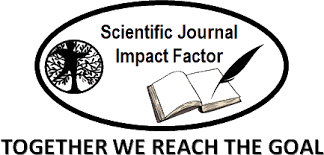SUPPLY CHAIN ANALYSIS OF SHALLOTS THROUGH RELATIONAL APPROACH (Study On Shallot Farmers in 4 District, East Java)
DOI:
https://doi.org/10.21776/ub.ijabs.2020.28.1.6Abstract
ABSTRACT
Purpose — This research aims to examine the effect of relational capital to supply chain integration and supply chain responsiveness.
Design/methodology/approach — This research uses explanatory research with a quantitative approach. The object of this research was in four districts of East Java at Nganjuk, Kediri, Malang, and Probolinggo which are the centers of onion production that have similar environmental conditions. The sampling method in this research used multistage proportional random sampling with 200 respondents as a sample of this research. Data analysis uses the path analysis method by software SPSS 23.
Findings — The results show that the relational capital has a positive and not significant effect on the supply chain integration and relational capital has a positive and significant effect on the supply chain responsiveness.
Practical Implications — Supply chain responsiveness is greatly affected by the relational capital but not with the supply chain integration.
Originality/value —
Keywords Agroindustry, Relational Capital, Shallot, Supply Chain Integration, Supply Chain Responsiveness
Paper Type research paper (case study)
Â
Keyword: Agroindustry, Relational Capital, Shallot, Supply Chain Integration, Supply Chain Responsiveness
References
Assauri, Sofjan, 2011. Strategic Management, Sustainable Competitive Advantage. Jakarta.
Ageron B, Gunasekaran A, Spalanzani A., 2011. Sustainable Supply Management: An Empirical Study. Int. J.
Production Economics , Article In Press.
Centinkaya, B., Cuthbertson, R., Ewer, G., Klaas-Wissing, T., Piotrowicz, Dan W., Tyssen, C. 2011. Sustainable
Supply Chain Management. Springer. Germany.
Seuring S. 2012. A Review Of Modeling Approaches For Sustainable Supply Chain Management. Decision
Support Systems, Article In Press
Adisaputro, Gunawan. 2014. Manajemen Pemasaran (Analisis untuk Perancangan Strategi Pemasaran). Yogyakarta. UPP STIM YKPN.
Rasoki, Timbul dkk. 2016. Pembandingan Efisiensi Pemasaran Bawang Merah Konsumsi Dan Benih Di
Kabupaten Brebes, Provinsi Jawa Tengah. Jurnal Agro Ekonomi IPB, Bogor. Vol. 34 No. 2, Oktober 2016:145-160
Fuad, Zainul, Aenurofik Dan Rosyid, 2015. Belenggu Tengkulak Atas Pembudidaya Lele: Relasi Patron-Klien
Budidaya Lele Di Wono Tunggal Jawa Tengah. Jurnal Hukum Islam (JHI), 13(2): 88-98.
Nashika, Isna Ainun, 2014. Relasi Petani Gurem Dengan Tengkulak Sebagai Pertukaran Sosial Petani Di
Kabupaten Banyuwangi. Skripsi Jurusan Sosiologi, Fakultas Ilmu Sosial Dan Politik , Universitas Negeri Jember
Rustinsyah. 2011. Hubungan Patron Klien Di Kalangan Petani Desa Kebonrejo. Jurnal. Vol.24, No.2. Surabaya.
Universitas Airlangga. Hal 176-182.
Barney, J.B., 1991. Firm Resources And Sustained Competitive Advantage. Journal Of Management. Vol. 17: Pg.
-120.
Mata, F., W. Fuerst, And J. Barney, 1995. Information Technology And Sustained Competitive Advantage: A
Resource-Based Analysis. MIS Quarterly 19(4), 487–505.
Peteraf, M. A. 1993. The Corner Stones Of Competitive Advantage: A Resource-Based View. Strategic
Management Journal , 179-191
Wernerfelt, B. 1984. A Resource-Based View Of The Firm. Strategic Management Journal , 171-180.
Flynn, B.B., Huo, B. & Zhao, X., 2010. The Impact Of Supply Chain Integration On
Performance: A Contingency And Configuration Approach. Journal Of Operations Management, 28(1), Pp.58–71.
Schoenherr, T. & Swink, M., 2012. Revisiting The Arcs Of Integration: Cross-Validations And Extensions.
Journal Of Operations Management, 30(2), Pp.99–115
Downloads
Published
How to Cite
Issue
Section
License
The copyright of the received article shall be assigned to the journal as the publisher of the journal. The intended copyright includes the right to publish the article in various forms (including reprints). The journal maintains the publishing rights to the published articles.












